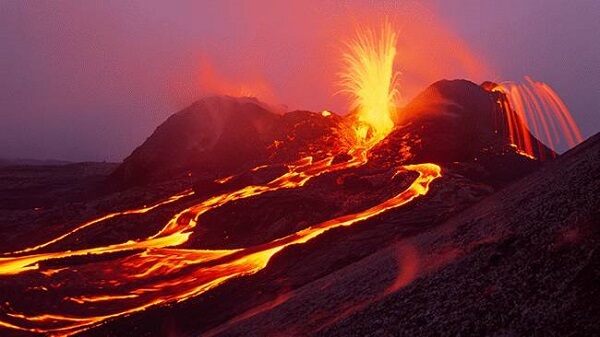At Hawaii Volcanoes National Park, you may witness some of nature’s most awe-inspiring sights. The park, located 45 miles southwest of Hilo is home to two volcanoes. It includes Kilauea, one of the most active volcanoes on the planet. The opportunity to observe the primal process of creation and destruction makes it one of Hawaii’s most popular visitor attractions and a sacred site.

What do you know about Hawaii Volcanoes National Park?
From the summit of Maunaloa to the sea, Hawaii Volcanoes National Park spans 335,259 acres, or approximately 523 square miles. By comparison, the island of Oahu is 597 square miles. The hiking trail is 150 miles. You will see volcanic craters, scalded deserts, and rainforests. As well as a visitor center, petroglyphs, and two active volcanoes. They are Maunaloa (last erupted in 1984) and Kilauea (last erupted in 2018).

Kilauea is frequently referred to as “the world’s only drive-in volcano”. This active volcano once spewed 250,000-650,00 cubic yards of lava every day. It’s enough to resurface a 20-mile-long two-lane road per day. On the island of Hawaii, more than 875 acres of new land had been produced as of January 1983.
The park’s great ecological diversity was acknowledged by UNESCO in 1980. At that time it was designated a World Biosphere Site. And again in 1987 when they designated it as a World Heritage Site.
Kilauea Volcano Visitor Center
Open every day from 9:00 a.m. to 5:00 p.m.
Start your tour at the Kilauea Visitor Center for a wonderful overview of the park. There are ranger talks, walk ideas for the day and ranger-guided activities. Here you can receive maps, read about the park’s hikes, and get the most recent volcano updates.

Crater Rim Tour
The 10.6-mile Crater Rim Drive encircles the Kilauea Caldera. You can reach The Puu Puai Overlook, Devastation Trail, and Kilauea Iki Crater Overlook by driving around this loop. Steam vents erupt from this gigantic crater. People named it Pele’s (the volcano goddess’) abode. This crater was filled with a lake of lava in 2008. Therefore it vanished in 2018. The seismic activity caused by crater walls collapsing created a much larger crater. The volume of Halemaumau in May 2018 was approximately 70-78 million cubic yards. It is now approximately 1.2 billion cubic yards. The crater floor has plummeted 1,600 feet. This precious location should be treated with utmost reverence. It’s also worth remembering that the increased elevation near the crater means temperatures can plummet quickly. If you come from the beach in shorts and a t-shirt, bring some warmer clothing, such as a light jacket, with you.

Puu Oo Vent
The lava pond from Puu Oo Vent dissipated on April 30, 2018. Then it moved toward the Lower East Rift Zone. Since January 1983, Puu Oo had been erupting virtually continually.

Road of the Craters
Chain of Craters Road is located south of Crater Rim Drive. This 3,700-foot trek eventually comes to an end where a lava flow has engulfed the road.

The Volcano House
The Volcano House hotel overlooks Halemaumau Crater. It has been in operation since 1846 when it was a grass cabin. On a trip to Hawaii, Mark Twain stayed here.

SUGGESTIONS FOR YOUR VISIT
- Please stay on specified routes, obey all warning signs, and avoid restricted areas for your own safety. In certain places, there is a risk of hazardous volcanic gases and unstable ground.
- Give yourself plenty of time for your journey. Consider staying on the island’s east side to get the most out of your visit. Hilo is about a 45-minute drive away. The travel to and from Kona takes approximately 2.5–3 hours each way.
- Keep to the open paths and roads. Closed paths and roads are unsafe; avoid them.
- Keep a safe distance from fissures and sinkholes. People have been critically hurt and killed as a result of falls through the cracks. Do not approach cracks since their edges are unstable.
- Rockfalls are unpredictably destructive. Keep an eye out for cliffs and stay away from them.
- Wear sturdy shoes and long pants because landing on lava rock is similar to falling on broken glass.
- Hiking should not be done after dark. Even individuals who are familiar with the area should exercise caution.

